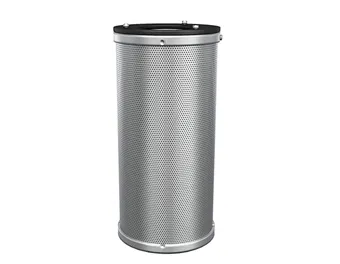 Tel:
+8615930870079
Tel:
+8615930870079
10월 . 02, 2024 19:45 Back to list
Efficient Cartridge Dust Collector Filters for Enhanced Air Quality and Dust Management
Understanding Cartridge Dust Collector Filters
In various industrial sectors, the need for effective dust collection is paramount to maintain a safe and healthy work environment. One of the most popular solutions for managing airborne particles is the cartridge dust collector filter. These systems are designed to capture and remove dust particles suspended in the air, ensuring cleaner air quality and compliance with regulatory standards.
What is a Cartridge Dust Collector Filter?
Cartridge dust collector filters are a part of an air filtration system that employs cylindrical filters to separate dust from the air. These filters come in various sizes and materials, designed to meet specific industrial requirements. The structure of a cartridge filter typically consists of a pleated design that increases the surface area, allowing for higher dust collection efficiency and longer filter life. This feature makes them an optimal choice for many applications, from woodworking to metalworking and pharmaceuticals.
How Do Cartridge Dust Collector Filters Work?
The operation of a cartridge dust collector filter is relatively straightforward. Air laden with dust and particulate matter is drawn into the filtration system and passed through the cartridge filters. As the air flows through, dust particles are trapped on the surface and within the depth of the filter material. Clean air then exits the system, often through a fan that helps maintain airflow.
A key advantage of cartridge filters is their ability to withstand high dust loads, which makes them ideal for industries that produce significant amounts of particulate matter
. Moreover, the pleated design allows for a greater amount of dust to be contained within a smaller footprint compared to traditional baghouse filters.Maintenance of Cartridge Dust Collector Filters
cartridge dust collector filter

While cartridge dust collector filters are effective, they do require regular maintenance to ensure optimal performance. Over time, dust accumulates on the filter surface, which can hinder airflow and reduce efficiency. Typically, maintenance involves periodic cleaning, either through manual methods or automated pulse-jet cleaning systems, which utilize bursts of air to dislodge accumulated dust from the filter.
It is also essential to monitor the pressure drop across the filter. An increasing pressure drop can indicate that the filter is becoming clogged and may need cleaning or replacement. Regular inspections and maintenance not only enhance the longevity of the filters but also ensure consistent performance of the dust collection system.
Advantages of Cartridge Dust Collector Filters
The benefits of using cartridge dust collector filters are numerous. First, they are highly efficient in capturing fine particles, significantly contributing to improved air quality in industrial settings. Second, their compact design allows for easy installation in areas with limited space, making them versatile for various applications. Additionally, the longevity of cartridge filters, combined with their low maintenance requirements, often results in cost savings over time.
Moreover, many modern cartridge filters are designed to be environmentally friendly, with materials and processes that minimize their ecological footprint. This is increasingly important as industries strive to adhere to stricter environmental regulations and promote sustainability.
Conclusion
In summary, cartridge dust collector filters play a crucial role in managing airborne dust in various industrial environments. Their efficiency, ease of maintenance, and compact design make them a preferred choice for many applications. As industries continue to prioritize health, safety, and environmental standards, the importance of effective dust collection systems, particularly cartridge filters, cannot be overstated. Investing in the right dust collector filter not only contributes to a safer workplace but also enhances overall operational efficiency.
-
Types and Applications of Air Filtration CartridgesNewsJul.28,2025
-
The Role of Gas Turbine FiltersNewsJul.28,2025
-
Mastering Air Filter Cartridge UseNewsJul.28,2025
-
Advanced Turbine Filters for Modern Gas TurbinesNewsJul.28,2025
-
Cellulose Air Filter Cartridge Advantages in Dust FiltrationNewsJul.28,2025
-
Cellulose Filters for Air Particle ReductionNewsJul.28,2025

 Email:
Email:





